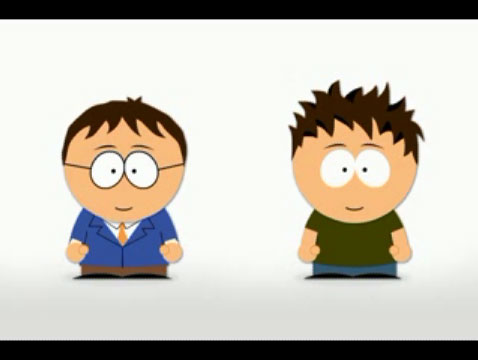How mutated advertising thrives in Web 2.0 world
Jun 30, 2012

This popular consumer-created ad took inspiration from Apple, Microsoft and television show South Park
Conversations around ads in digital media can be mapped and interpreted
The rules of advertising have changed dramatically since the surge of popularity in social media, which in turn is forcing firms to rethink how they reach consumers online. Not only are audiences consuming video via non-traditional media, but in a major shift facilitated by inexpensive media software, they are also creating the content.
A 2011 Beedie study notes that this new wave of digital advertising – user-generated ads that are posted to social media channels such as YouTube – has profound implications for brand managers and advertisers, given the wide range of variables that can impact how a user-generated advertisement is interpreted. As a result, firms have to think seriously about their response when their brands are targeted online.
The study, published in 2011 in the Journal of Advertising and entitled “Understanding Consumer Conversations Around Ads in a Web 2.0 World,” shows how conversations around ads in digital media can be mapped and interpreted.
The researchers – Leyland Pitt and Michael Parent of SFU’s Beedie School of Business, Colin Campbell of Monash University in Melbourne, and Pierre Berthon of the McCallum School of Business at Bentley College in Massachusetts – note that within the “noise” of online conversation, there are thousands of words, multitudes of conflicting voices, and countless market conversations that have significant ramifications for companies and their brands.
“Customers are now making their own ads, and propagating them on free Web 2.0 conduits such as YouTube,” write the researchers. “These consumer-generated ads introduce noise to firm-consumer communications – with firms losing their ability to precisely control messages about their brands.”
The article introduces a powerful tool for the analysis and interpretation of the consumer conversation that consumer-generated ads elicit. Once mapped, consumer discussions around different ads are shown to be complex and highly nuanced – complete with everything from “seeded” commentary and paid-for cheerleading to humour, social activism, and hostility.
Advertising decision makers, the article maintains, will have to cope with these new intricacies in this age of “mutated advertising”. Given that advertising has evolved into something far less static, and far more fluid, its measurement and the measurement of its effects will continue to be perplexing – whether advertisers like it or not.
In developing a framework for the various strategic stances that a firm can adopt in response to CG advertising, the researchers identified three basic motivations that consumers have for creating and broadcasting ads: Intrinsic Enjoyment, Self-Promotion, and Perception Change. They hold up the following online ads as examples of each:
Intrinsic Enjoyment: The iPod Dance
Gabriel Stella is a young Brazilian who “always like[s] to create things – images and stuff” and created a video for Apple’s iPod called “iPod Dance”. The video is notable for its synchronization of eight iPod screens to dance music.
Self-Promotion: iPhone New York
Taking advantage of the hype surrounding the launch of Apple’s iPhone, Alec Sutherland and his friends from the advertising industry created a polished commercial – for their own enjoyment — touting the product’s features.
Perception Change: The Poor Bastard – David’s “Starbucks Ad”
A spoof ad by an author named David (aka “the Poor Bastard”) that focuses cynically on the price of a Frappuccino beverage and conspicuous consumption against a backdrop of poverty in developing countries.
A Combination of Three Motivations: Apple-Microsoft South Park Spoof Ad
The ad parody’s creator, Gabriel Schwarzer, captures the essences of the Apple ads taking aim at Microsoft’s Vista operating system by juxtaposing the messaging in exaggerated fashion into a South Park-like cartoon.
